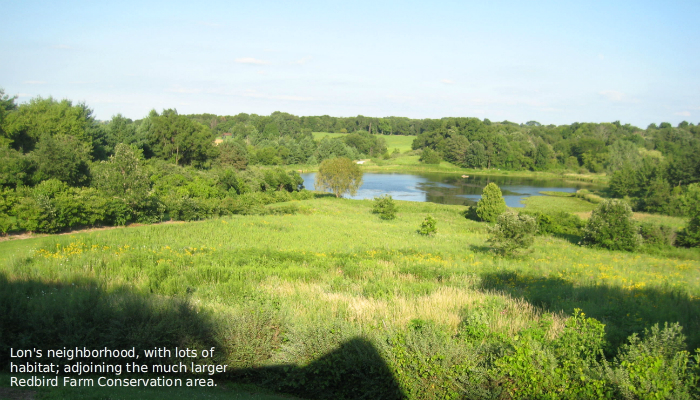In Habitat Conservation, Size Matters

By Lon Drake
Iowa has been named one of the most disturbed states in the country because almost all of our land is under agricultural production or some other human use and is no longer useful habitat. Consequently, habitat that does get conserved is usually in small, isolated parcels.
And at one time, small, isolated land parcels seemed like an acceptable compromise between development and environmental protection. But as people became more aware of how conservation actually works, a new perspective developed. For example, when wetland mitigation was first required, entrepreneurs created “wetland banks.” While many of these were done poorly, due to profit overriding habitat value, when the monitoring data starting coming in a few years later, analysis of those done well revealed that bigger was better.
So today larger scale wetland banking is the preferred option, rather than building a bunch of little wetlands sprinkled about the landscape. Researchers studying animal movement, seed dispersal, inbreeding, territoriality, microclimate patterns, etc., have come to similar conclusions, favoring larger habitat parcels over many small ones. This is especially true for Iowa, where insecticides are applied like a toxic blanket across the state, and there is often drift, both of sprayed mists drifting onto adjoining conservation lands, and of birds, mammals, and bugs drifting into adjacent toxic zones.
Therefore, I think the message for conservation organizations, whether an NGO (non-governmental organization) like Bur Oak Land Trust, or a government organization like Johnson County Conservation, is that (given limited budgets) new land acquisitions that are attached to existing quality (i.e. non-poisoned) habitat have more conservation value than a number of smaller parcels embedded in the industrial/agricultural landscape.
This same idea goes for your yard as well. If yours is the only one in your neighborhood where a variety of insects, wild animals, and native plants find food and habitat, your personal contribution to conservation is most likely small. Expand that scale to include the neighbors’ yards plus a little park and you improve the odds that you will have uncommon birds, rare butterflies, bees pollinating your tomatoes, and – who knows – maybe even a nesting pair of merlins!


